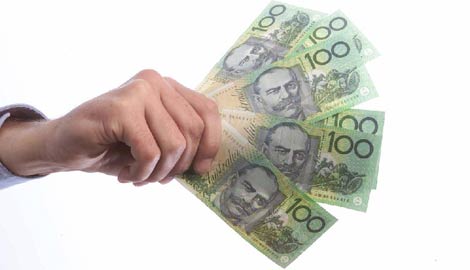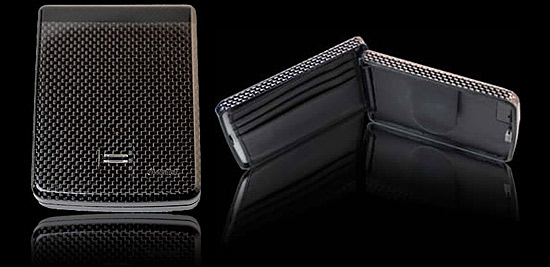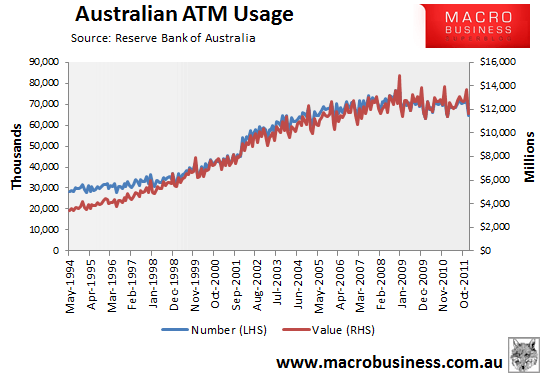
The Reserve Bank of Australia (RBA) recently released stats on how we use money, here is Peter Martin’s take in The Age and his blog today:
- ATM cash withdrawals down 1.3%
- Internet transfers up 7.5%
- EFTPOS transactions up 7.5%
- Debit card transactions up 12%
- Credit card balances up 0.7%
- Personal cheques down 5.7%
We withdrew cash from ATMs 64.7 million times in January, which sounds a lot but was well down on 65.6 million times the previous January. December was even worse. We took out cash 71.9 million times compared to 73.6 million the year before…. the average size of a card transaction fell to just $89.53 – an all-time low.
The trend is fairly obvious:
It seems we are moving more towards “pay by phone”, internet purchases and debit cards without a commensurate rise in the stock of credit card debt, which only climbed 0.7% for the year, the smallest annual growth on record.
Let’s put this macro trend in context with a quick history lesson because I think this bears thinking about, especially for the retail and broader service sectors.
There’s a fascinating overview at the RBA’s Currency Museum – I’ve provided the “Reynard Notes” below:
Just after colonisation, a jumbled commodity standard (based on rum – things haven’t changed that much north of Brisbane at least) and barter were the mainstay currencies. Because of a shortage in British coins, foreign denominations were used until promissory notes came into use as a stopgap before the British currency was formerly adopted in 1825 (a specie gold standard)
A gold rush and mining boom from the 1850’s onwards brought about the raising of a Mint with gold coins produced from 1855 onwards and used as legal tender. A banking boom followed with the requisite credit inflated speculative bubble (sound familiar readers?) that crashed spectacularly in the 1890’s. The crisis and depression that followed required a new national currency, but gold and copper coins became the standard again.
From Federation onwards, bank notes rose to prominence again, until subscribed national bank notes took over until just before WW1, but these were fully backed by gold. On the creation of the Commonwealth Bank (before it became the RBA and CommBank), new national paper notes were created and used as currency alongside smaller denomination coins until the decimilsation in 1966.
The new Australian dollar broke from the British pounds/shilling past, and with the dumping of the $1 and $2 notes (due to inflation in the 1970’s), remains with us today, although the notes are now a high tech plastic design with embedded security features.
Here’s the quick version:
rum -> foreign coins -> gold-specie – > unbacked bank credit notes -> gold-exchange – > gold-bullion backed paper -> fiat paper -> fiat plastic -> ????
Where is this evolution heading, or as described (if a bit of a hard slog) by David Graeber in his voluminous book on debt and money, is it just oscillating between paper and gold, credit/debit and debt? From a trend level, the increased use of technology is destined to drive physical currency out of mainstream use, and even for the gold bugs there is an electronic gold standard beginning to take hold, which is effectively the same as the gold exchange standard and fits into the historical paradigm. (i.e new more reliable currency after an epic credit bubble crashes)
Wherever it is going, I want one of these or the evolution thereof:

Here is how it works: the wallet connects to your cellphone via Bluetooth. When the two objects are separated by more than 15-30 feet, the wallet will sound an alarm. So, in reality, it is really protecting you from losing two important items. The wallet also features a biometric fingerprint reader that will only open for its owner.
What are your thoughts on where money is going?
